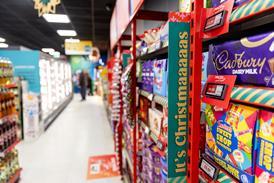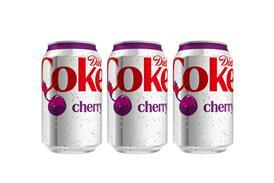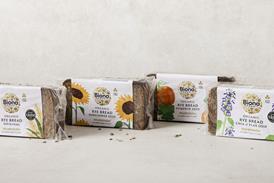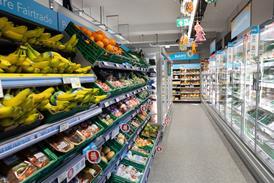The UK is often described as a nation of pet lovers, and the statistics agree. According to the 2013 Pet Food Manufacturers Association survey, 13 million (45%) of UK households currently have pets, and the pet population has increased by four million to almost 71 million over the past 12 months.
As part of being animal mad, we love spending our hard-earned cash on our pets, with Mars Petcare research showing that pet shoppers spend 50% more than the average customer, proving that pets equal basket spend. However, the same research shows that just 22% of pet shoppers are buying from convenience stores, meaning that independent retailers have some work to do in order to convince shoppers to buy from them.
There’s every incentive to change this. Euromonitor is predicting that value sales of pet care products will rise 12.1% by 2016, showing that higher value lines are still proving popular with consumers.
Demand for single-serve packs growing
With convenience store owners strapped for space it’s important to get the right range of pet care products. In the convenience channel, single-serve sales increased by 6.6% over the past year (IRI Convenience & Forecourts MAT January 4, 2014). This has been driven by the cat food side of the market, with customers moving away from multi-serve cans in favour of the simpler pouch.
“This is partly due to the increased demand for convenience from today’s busy consumers as the popular wet cat pouches aid a simple transfer from packet to bowl, and also provide the ease of a single-serve portion,” says Purina market development organisation director Liz Wood.
She says that time- and cash-poor pet care customers want a product that doesn’t take too long to serve and won’t break the bank, with boxes of single serve packs offering up a balance of efficiency and value.
“Due to the challenging economic climate, shoppers also try to purchase their preferred products at a lower unitary cost, whenever possible,” says Wood.
“With up to 65% of cat owners looking to make some savings to their household bills, a common way of doing so is through buying bigger packs of their favourite foods. The best example of this trend is the 44-pack of Felix single-serve pouches with sales up 56% over the past year, making it the the sixth biggest selling line in total grocery.”
She adds that this trend is also apparent in convenience stores. “It has been successful when sold in high street stores,” says Wood. “These popular wet cat pouches also address cat owners’ quality aspiration and the increased demand for convenience from today’s busy consumers, as pouches aid a simple transfer from packet to bowl, and also provide the ease of a single-serve portion.”
It also cites opportunities for dog and cat treats and small mammal/reptile food.
Adam Hogwood, manager at Morrison’s Budgens of Broadstairs in Kent, believes providing a higher quality of service has been the key to growing his pet care sales.
“We have capitalised on the fact that our nearest big competitor for selling pet food is an out-of-town Pets At Home store, so we’re in a good position,” he says. “We have just launched a pet care ordering service that allows us to get a great price on case deals for the customer and ensure that they come into the store once to place the order and pay, and once again to collect it, increasing frequency.”
Adam works with Norfolk supplier Su-Bridge Pet Supplies to offer this wider-than-the-average convenience store range to customers. “We have access to thousands of lines via Su-Bridge, including everything from hedgehog food to ostrich feed, so we can offer a great range to our customers which increases turnover, encourages repeat custom and provides a far more personal service as we take them through the lines available,” Adam says. “Plus if they cannot collect their order, we’ll drop it to a local address for them.”
Of course, it’s tricky to provide this extensive service if customers don’t know you stock pet care products in the first place. But Adam has thought of this already. “We have paw prints on the floor that lead the way to our pet care section,” he explains. “This has proved a great way of getting kids to follow the paw prints, and for the parents to see the range as well.”
As always, range is key to the success of this category. Harj Dhasee of Nisa Village Stores in Mickleton, Gloucestershire, says it’s worth examining the pet care category to ensure you have the right mix of lines. “It’ll never be the biggest category for a store, but it’s important to get it right,” he says. “It generates about £2,000-worth of sales per week for us, so we want to maintain and grow that.”
To maintain sales, Harj breaks the section down by animal type to provide the best format. “Pouches of cat food are going really well; nobody buys tins anymore,” he says. “You also need to have plenty of promotions on cat food.”
For the kennel club, bigger packs are the key to success. “Pedigree had a massive push on canned dog food in the past year and they’ve held their own in terms of sales of late,” says Harj. “Larger bags also sell really well and we shift about 10 of those a week. Dog treats are also popular and always worth stocking alongside the main display.”
Harj adds that the placement of a pet care section is key and he goes “big and bold” on his. “Ours is beside our non-food display, but every customer has to pass it on the way to the till,” he says. “The packs themselves are quite bright so the category will stand out if it’s merchandised properly.”
For retailers considering going big on pet care produce, it’s worth remembering that even though customers usually spend more on their pets, they are also on the lookout for a bargain.
Euromonitor says the category is “a good example of goods that represent a significant proportion of the weekly household budget that could be cut, especially when placed against all the other attendant costs of pet ownership, such as insurance and healthcare”.
Manager of Scotmid Laurencekirk in Aberdeen, Stewart Smith, decided to focus on pet care when the store had a recent refit, with value at the heart of the changes. “Pet care is a massive category for the store and we wanted to ensure that we were making the most of it,” he explains. “We increased the offering from two bays to five to cope with the demand.”
One of the main focuses of the category is having products on promotion. “Customers who buy pet care products aren’t necessarily loyal to one brand; they’re constantly on the lookout for a deal and don’t really mind where it comes from,” says Stewart.
“We make sure we always have something on promotion as customers will always stock up no matter what the brand.”
IN BRIEF
151 unveils puppy products range
151 Products has introduced a new range of puppy products. It has created a treats line designed to aid a dog’s digestive system, and added specialist coat care products including shampoos and conditioners to its Munch and Crunch dog range.
Pets Choice rolls out 400g packs
New from Pets Choice is a range of dry cat food in 400g packs. Webbox Cats Delight Complete is available in two varieties -chicken & duck and salmon & chicken - and contains natural antioxidants and prebiotics to help improve digestion.
Pet latch keeps dogs healthy
Woof Woof Castle has developed a new pet safety product to help prevent dogs from becoming ill. Peek a Boo pet latch is designed to keep dogs out of rooms where cat litter trays are kept, preventing them from eating the faeces and developing pancreatitis.
New Delibakie dog treat range
Purina has unveiled a new range of dog treats. The Delibakie range comes in four variants - rolls, stars, fishies and hearts - in 100g/90g resealable pouches (rrp £1.29). The launch will be supported by a £1.2m marketing campaign, including digital and print advertising, sampling and in-store activity.
Healthy sales
Mars Petcare has added Whiskas Healthy Joints (rrp £1.38). The snack is designed to act as a functional treat that helps support a cat’s joints. Whiskas Healthy Joints are supported by POS material and a TV ad campaign running throughout 2014.
Source
Aidan Fortune

























1 Readers' comment